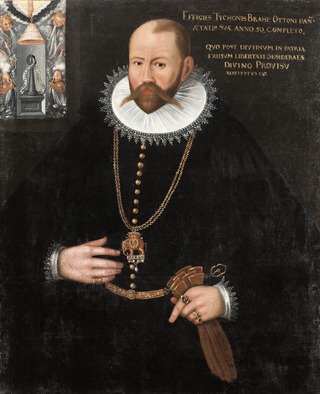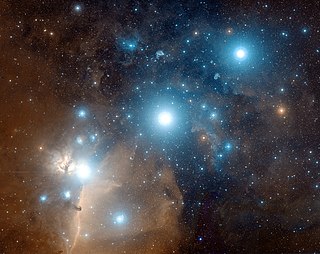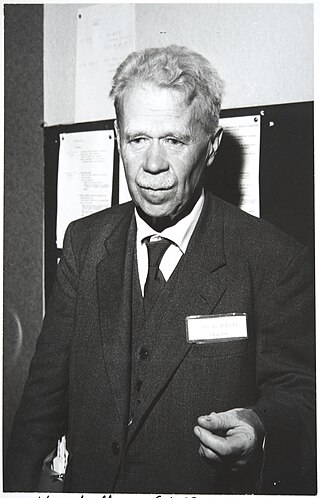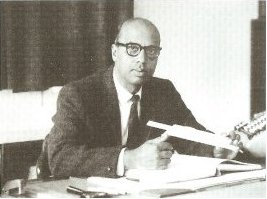
Tycho Brahe, generally called Tycho for short, was a Danish astronomer of the Renaissance, known for his comprehensive and unprecedentedly accurate astronomical observations. He was known during his lifetime as an astronomer, astrologer, and alchemist. He was the last major astronomer before the invention of the telescope. Tycho Brahe has also been described as the greatest pre-telescopic astronomer.

Frederick William Herschel was a German-British astronomer and composer. He frequently collaborated with his younger sister and fellow astronomer Caroline Herschel. Born in the Electorate of Hanover, William Herschel followed his father into the military band of Hanover, before emigrating to Great Britain in 1757 at the age of nineteen.

Astrophotography, also known as astronomical imaging, is the photography or imaging of astronomical objects, celestial events, or areas of the night sky. The first photograph of an astronomical object was taken in 1840, but it was not until the late 19th century that advances in technology allowed for detailed stellar photography. Besides being able to record the details of extended objects such as the Moon, Sun, and planets, modern astrophotography has the ability to image objects outside of the visible spectrum of the human eye such as dim stars, nebulae, and galaxies. This is accomplished through long time exposure as both film and digital cameras can accumulate and sum photons over long periods of time or using specialized optical filters which limit the photons to a certain wavelength.

Jodrell Bank Observatory in Cheshire, England hosts a number of radio telescopes as part of the Jodrell Bank Centre for Astrophysics at the University of Manchester. The observatory was established in 1945 by Bernard Lovell, a radio astronomer at the university, to investigate cosmic rays after his work on radar in the Second World War. It has since played an important role in the research of meteoroids, quasars, pulsars, masers, and gravitational lenses, and was heavily involved with the tracking of space probes at the start of the Space Age.

Yrjö Väisälä was a Finnish astronomer and physicist.

Caroline Lucretia Herschel was a German astronomer, whose most significant contributions to astronomy were the discoveries of several comets, including the periodic comet 35P/Herschel–Rigollet, which bears her name. She was the younger sister of astronomer William Herschel, with whom she worked throughout her career.

Jan Hendrik Oort was a Dutch astronomer who made significant contributions to the understanding of the Milky Way and who was a pioneer in the field of radio astronomy. The New York Times called him "one of the century's foremost explorers of the universe"; the European Space Agency website describes him as "one of the greatest astronomers of the 20th century" and states that he "revolutionised astronomy through his ground-breaking discoveries." In 1955, Oort's name appeared in Life magazine's list of the 100 most famous living people. He has been described as "putting the Netherlands in the forefront of postwar astronomy".

Jean-Louis Pons was a French astronomer. Despite humble beginnings and being self-taught, he went on to become the greatest visual comet discoverer of all time: between 1801 and 1827 Pons discovered thirty-seven comets, more than any other person in history.

Father Francesco de Vico was an Italian astronomer and a Jesuit priest.

William Robert Brooks was a British-born American astronomer, mainly noted as being one of the most prolific discoverers of new comets of all time, second only to Jean-Louis Pons.

David Clifford Jewitt is a British-American astronomer who studies the Solar System, especially its minor bodies. He is based at the University of California, Los Angeles, where he is a Member of the Institute for Geophysics and Planetary Physics, the Director of the Institute for Planets and Exoplanets, Professor of Astronomy in the Department of Physics and Astronomy and Professor of Astronomy in the Department of Earth, Planetary and Space Sciences. He is best known for being the first person to discover a body beyond Pluto and Charon in the Kuiper belt.

John Edward Mellish was an American amateur astronomer and telescope builder.

Markree Observatory was an astronomical observatory in County Sligo, Ireland. The asteroid 9 Metis was discovered from this observatory in 1848 by Cooper's assistant Andrew Graham using a comet seeker telescope. The observatory was also home to the largest refractor of the early 1830s, which had a 13.3-inch (340 mm) aperture Cauchoix of Paris lens; the largest in the world at that time. The observatory also housed a number of instruments and was operated to varying degrees throughout the 19th century.

Niccolò Zucchi was an Italian Jesuit, astronomer, and physicist.

The Nibiru cataclysm is a supposed disastrous encounter between Earth and a large planetary object that certain groups believed would take place in the early 21st century. Believers in this doomsday event usually refer to this object as Nibiru or Planet X. The idea was first put forward in 1995 by Nancy Lieder, founder of the website ZetaTalk. Lieder claims she is a contactee with the ability to receive messages from extraterrestrials from the Zeta Reticuli star system through an implant in her brain. She states that she was chosen to warn mankind that the object would sweep through the inner Solar System in May 2003 causing Earth to undergo a physical pole shift that would destroy most of humanity.

Johann Baptist Cysat was a Swiss Jesuit mathematician and astronomer, after whom the lunar crater Cysatus is named. He was born in Lucerne, as the eighth of 14 children, to cartographer, historian and folklorist Renward Cysat (1545–1614).

Manali Kallat Vainu Bappu was an Indian astronomer and president of the International Astronomical Union. Bappu helped to establish several astronomical institutions in India, including the Vainu Bappu Observatory which is named after him, and he also contributed to the establishment of the modern Indian Institute of Astrophysics. In 1957, he discovered the Wilson–Bappu effect jointly with American astronomer Olin Chaddock Wilson.

The Mummy is a 1911 American short silent film produced by the Thanhouser Company. The film details the story of Jack Thornton, a businessman, who is in love with Professor Dix's daughter. Jack purchases a mummy and plans to win his respect as an Egyptologist, but the mummy is reanimated in Jack's room by a live electrical wire. The mummy takes immediate interest in Jack, but is rejected and mummifies him. Before Professor Dix can cut up the now-mummified Jack, she returns and saves him. Jack explains everything and the film concludes with Professor Dix marrying the mummy.

The Institute of Theoretical Astrophysics is a research and teaching institute dedicated to astronomy, astrophysics and solar physics located at Blindern in Oslo, Norway. It is a department of The Faculty of Mathematics and Natural Sciences at the University of Oslo. It was founded in its current form by Svein Rosseland with funding from the Rockefeller Foundation in 1934, and was the first of its kind in the world when it opened. Prior to that, it existed as the University Observatory which was created in 1833. It thus is one of the university's oldest institutions. As of 2019, it houses research groups in cosmology, extragalactic astronomy, and The Rosseland Centre for Solar Physics, a Norwegian Centre of Excellence.


















